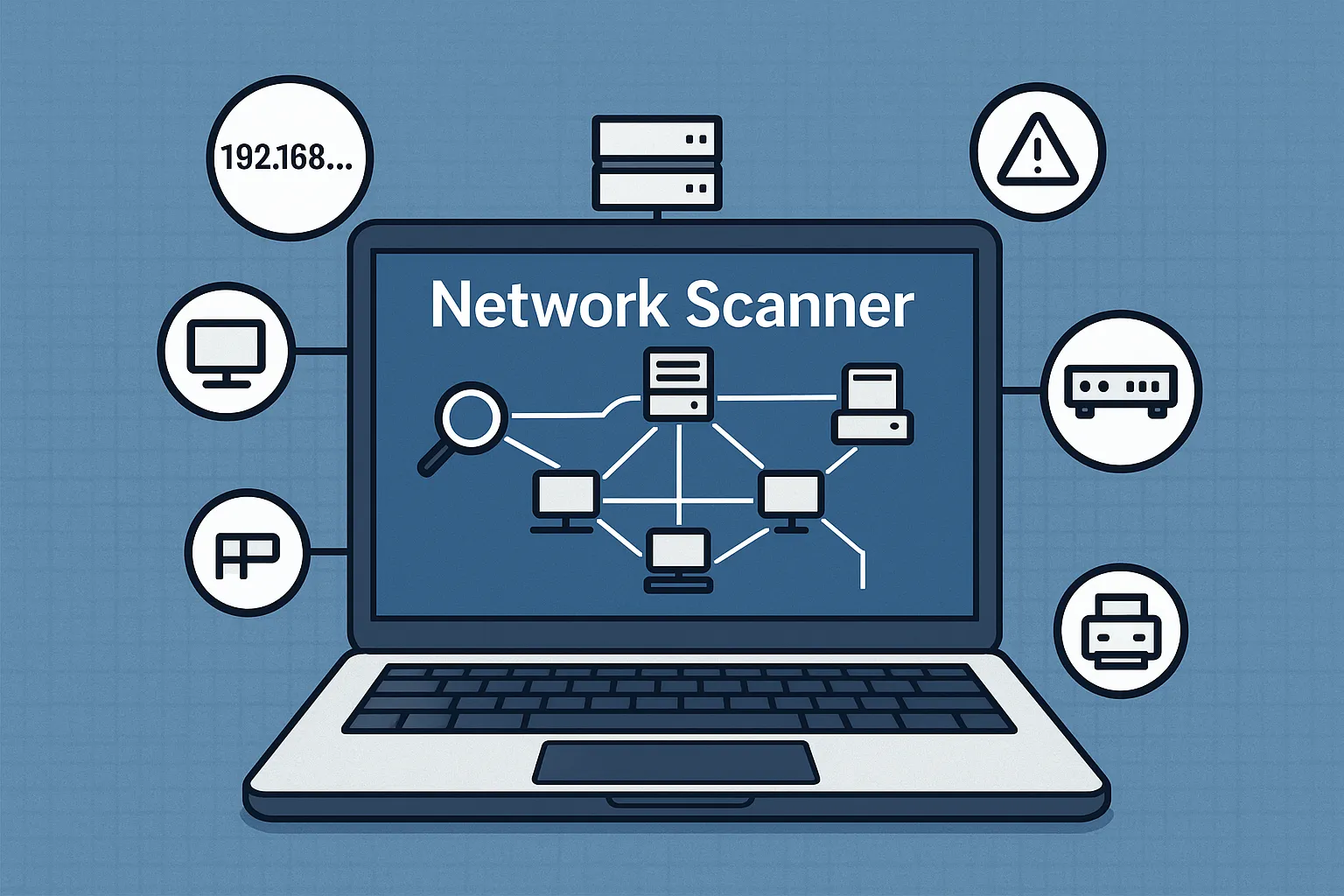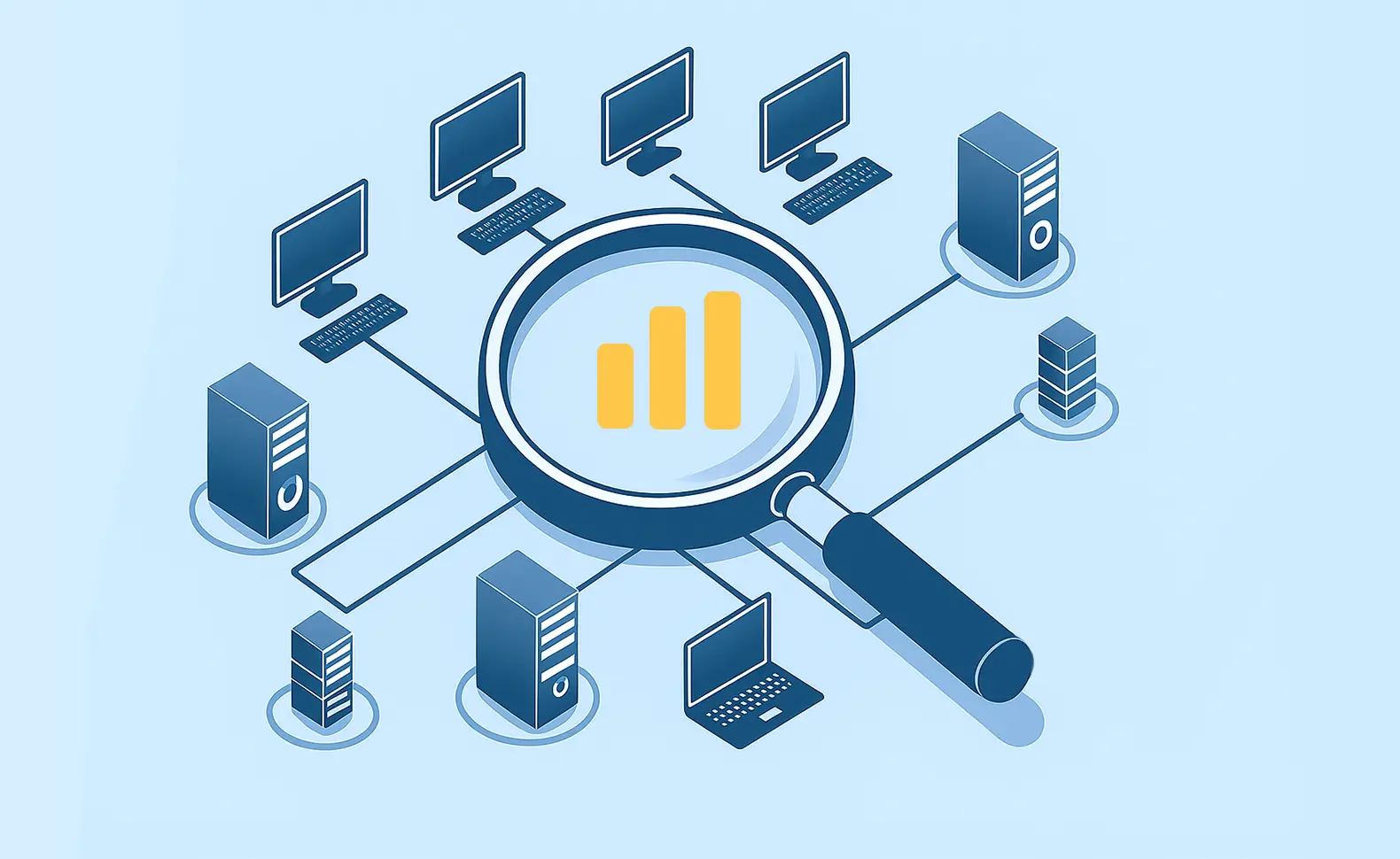The most important thing in brief:

In the hectic everyday life of an IT department, there is often little time left for time-consuming manual inventories. However, a complete overview of all devices, connections, and IP addresses in the network is critical — not only for smooth operation, but also for security and compliance. This is where network scanners come in.
What is a network scanner?
A network scanner is a tool that automatically identifies all active devices and services on a network. This recognizes IP addresses, operating systems, open ports and other technical details.
Basically, the scanner “scans” the entire network and creates an up-to-date list of all reachable components. A particularly practical example: An IT administrator wants to check which new devices were added overnight — instead of laboriously querying each switch or server individually, he can use a network scanner to create a complete overview in just a few minutes.
Features of a network scanner:
A modern network scanner offers much more than just a simple device search. Key features include:
- Device recognition:
The scanner automatically identifies all systems connected to the network, such as servers, clients, routers, printers, or IoT devices. - IP address management:
Active IP addresses are recorded, conflicts are identified and unused addresses are made visible — helpful for network planning and rapid fault diagnosis. - Vulnerability analysis:
Many scanners check for known security gaps or outdated services and thus provide important information for proactive IT security. - Network monitoring:
The current status of devices and connections is continuously monitored in order to be able to react early in the event of outages or performance problems. - Inventory of hardware and software:
Collected information about devices, installed software, or configurations helps IT departments with license management and IT asset management.
With these features, a network scanner is a central tool for IT departments to ensure transparency, control, and security across the entire infrastructure.
Network scanner versus IP scanner
The terms are often used Network scanner and IP scanner used synonymously. Strictly speaking, however, an IP scanner is a special form of network scanner that focuses exclusively on identifying and analyzing IP addresses. Read more about this in our blog article IP Scanner - How to improve network security and efficiency.
The benefits for everyday IT
A network scanner is more than just a technical tool — it is an assistant that makes everyday IT work noticeably easier.
- Safety aspects: Unknown or unauthorized devices can be quickly identified and isolated. In this way, potential security gaps can be closed before damage occurs.
- Increasing efficiency: Regular automatic scans save an enormous amount of time. Manually recording hundreds of devices is not only prone to errors, but is often simply impossible.
- troubleshooting: In the event of faults or performance problems, current network cards help to quickly locate and narrow down affected segments.
- Compliance and audits: Many companies must be able to prove at any time which systems are active and which software is installed. Network scanners provide the necessary evidence for this.
A practical example: In a medium-sized company, it was noticed that the bandwidth was suddenly overloaded. A quick scan showed that several unauthorized IoT devices were active on the WLAN. Thanks to the scan, the problem was resolved within minutes — without lengthy, manual checks.
Docusnap as network scanner software
Docusnap takes network scanning to a new level. Our software combines powerful scanning mechanisms with an intuitive IT documentation platform. You benefit from a fully automated and time-controlled inventory of your entire IT network. Docusnap continuously collects network information and updates it at regular intervals. This ensures that you always have the latest data to make informed decisions.
Benefits of Docusnap
- agentless scanning: Docusnap does not require any additional software on the target systems, which significantly simplifies the rollout.
- Automated schedules: IT departments can schedule regular scans automatically and are therefore always up to date.
- Detailed visualization: The scanned data is not only prepared in tabular form, but also presented graphically — e.g. in network plans or IP address overviews.
- Linking to other features: The results of the network and IP scan can be connected directly to authorization analyses, license management and other modules.
Thanks to this comprehensive integration, Docusnap helps IT managers not only monitor their infrastructure, but also document and optimize it sustainably.
Conclusion: Transparency creates safety and efficiency
In today's everyday IT life, network scanners are no longer optional helpers, but indispensable components of a modern IT strategy.
With Docusnap, companies not only have a tool at hand that reliably scans their networks, but also a central solution for documenting and further processing all collected information in a meaningful way.
In this way, the IT landscape remains transparent, secure and always ready for use — and IT teams gain valuable time for strategic tasks instead of getting lost in manual inventories.
The next steps:
If you want to get a well-founded overview of your IT infrastructure and rely on a powerful, automated solution, Docusnap is the ideal choice. As a network scanner, Docusnap combines automatic recognition of all systems with intuitive visualizations, comprehensive documentation and intelligent evaluations — completely without agents and with minimal effort for your IT department.
Try it now for free!


